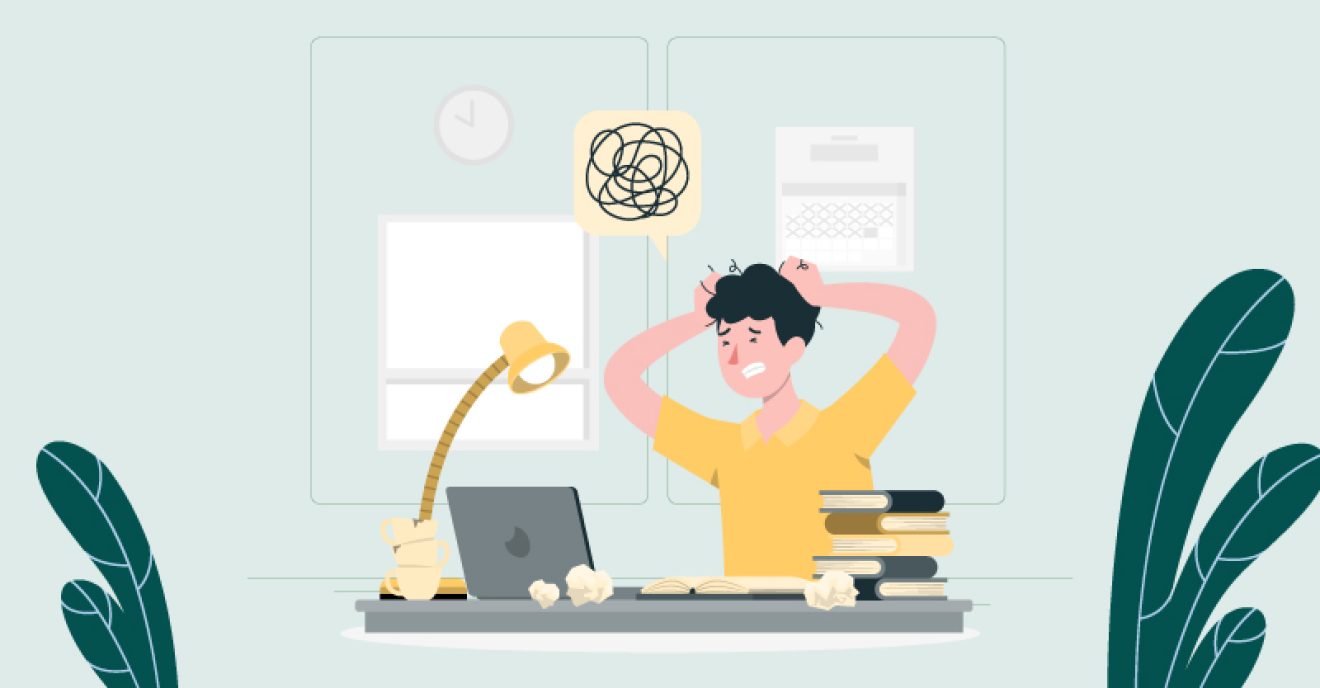We spend one third of our life working. To put this in perspective, we spend 8-10 hours a day committed to our professional lives. It is a place where employees also get a chance to spend quality time with their colleagues. If there are things that bother us at work, they mostly end up affecting the rest of the areas in our life.
Research conducted by the Mental Health Foundation in the UK brought light to the matter. It concludes that – 1 out of the total of 6.8 people experience mental health issues in the workplace. [1]
Today, employers are identifying the need to focus on the mental well-being of the employees. A workplace that prioritizes the mental health of employees can bring more benefits to the employer.
A report published by Alert Media proved that the poor mental health of employees at the workplace impacts the finances of the company. In fact, 50% of employees resign from their offices due to a lack of support and mental well-being at the workspace. [2]
All these reports, shocking numbers, and data-based statistics reflect the need to prioritize mental health and promote different ways of improving office dynamics for better mental well-being.
Modern workspace and mental well-being of the employees
Modern offices have an average of 9 hours working schedule. Hence, the employer needs to focus on providing the quality office ambiance to the employee. If the mind space gets occupied with stressful thoughts and anxious feelings, employees cannot work energetically, using their full potential. A focus on improving the workplace energy is essential for employers who want to improve employee mental health.
Understanding mental health – Why do employers need to understand it?
What is the definition of mental health? It is the overall health of a person’s social and psychological well-being. It does not only refer to the nervous system but also links to the emotional quotient. The impact of mental health can be extreme on personal lifestyle and professional life.
It can be challenging to concentrate and focus on work if the mental health is not right. Technology, social media, meetings and emails are all essential part of the work day, but thet are also a means of distraction from the ability to do focussed work. Social interactions among colleagues, inter-team relationships, company policies on leave of absence, stress around promotion, reviews, resignation and overall performance are also contributors to the mental health of an employee.
Anxiety makes it worse – Eliminating the anxious ambiance from the workspace
With the evolving professional dynamics and corporate norms, employees may need to work under a lot of pressure. Such pressure can create anxious feelings, impacting their mental well-being. So, employers need to be careful from the beginning and review the workspace environment. It can be paid leave or compulsory breaks for all employees. It may be through the introduction of flexible working hours.
Such employee-specific steps from the employer ensure the development of a well-functioning workspace that prioritizes the mental health of the employee and reduces their anxiety levels. Many employers have a two-way feedback process to understand the experience that they are providing their employees.
Poor mental health and its impacts – Reasons to prioritize
The poor mental health of the employee does not only adversely impact the work rate and performance quality, but also increases the workspace absenteeism and the rate of resignations. More employees end up leaving the organization. All of these can generate losses for a company and impact the overall operations.
Besides these, other side-effects of mental health deterioration include –
If you have no outlet for constant physical and/or emotional stress, several conditions may result, including:
- Reduced work engagement
- Zero job satisfaction
- Lack of team effort
- Increased absenteeism
- Gap in communication
The need of the hour – As an employer, all these mentioned side effects of the mental health of employees can decrease the operational rate at the office. Especially after the pandemic, there is an alarming need to focus more on the mental health aspect of the employees.
Different ways to prioritize the mental health of employees – There can be different ways to acknowledge the mental well-being of the employees by bringing changes in the office atmosphere.
- Green Zone: It is difficult to connect with nature in urban setting. Employers could create a spot of green space in the office where employees can connect with nature and spark their creativity.
- Meditation Room: A thoughtful step. Employees can use this space to meditate, take breaks, relax or do some yoga and practice mindfulness.
- Music or Entertainment nooks: A corner with a couple of headphones or a TV where your teams can listen to some music or watch a game together. Adding guitar or drums could be optional.
- Therapy and Counselling: Forward thinking employers provide complementary therapy sessions for the employees with professional and clinical psychologists to help them work through deeper aspects of their mental health.
A robust workforce – Perks of focusing on the mental health of employees
Developing a happy workforce is crucial for an employer. If employees have to drag themselves to work, it is not an ideal workspace. Such distressed feeling towards the workspace certainly indicates poor mental health. Employers across the globe must acknowledge it and make better decisions to help employees lead an improved work life.
Redefining workspace priorities
The workspace priorities have changed for the employees as well. Employees look forward to an office where they can work freely. Excessive pressure that blocks their mental space can be harsh on their overall well-being.
Suggestive actions for mental health at work by WHO
The Government, employers, and other stakeholders who are responsible for employee’s well-being can enhance mental health at work through the following ways – [3]
- Avoiding work-related mental health issues through risk prevention steps and analysis.
- Protection and promotion of mental health at workspaces with a thoughtful approach.
- Supporting employees with mental health issues for enhanced inclusivity.
- Introducing an enabling environment for change and creative exposure to relaxation.
In Conclusion: Support your employees.
With Mind Alcove, you can help yourself and improve your mental health. As an employer, you can also recommend your employees to use the mobile app of Mind Alcove. It helps the users maintain a private journal where they can share anonymously. Expressing thoughts and anxious feelings has shown to improve emotional and mental health.
References –
[1]https://www.mentalhealth.org.uk/explore-mental-health/mental-health-statistics/mental-health-work-statistics
[2]https://www.alertmedia.com/blog/mental-health-in-workplace/#:~:text=Mental%20health%20can%20also%20have,to%20eight%20days%20of%20work.
[3]https://www.who.int/news-room/fact-sheets/detail/mental-health-at-work









